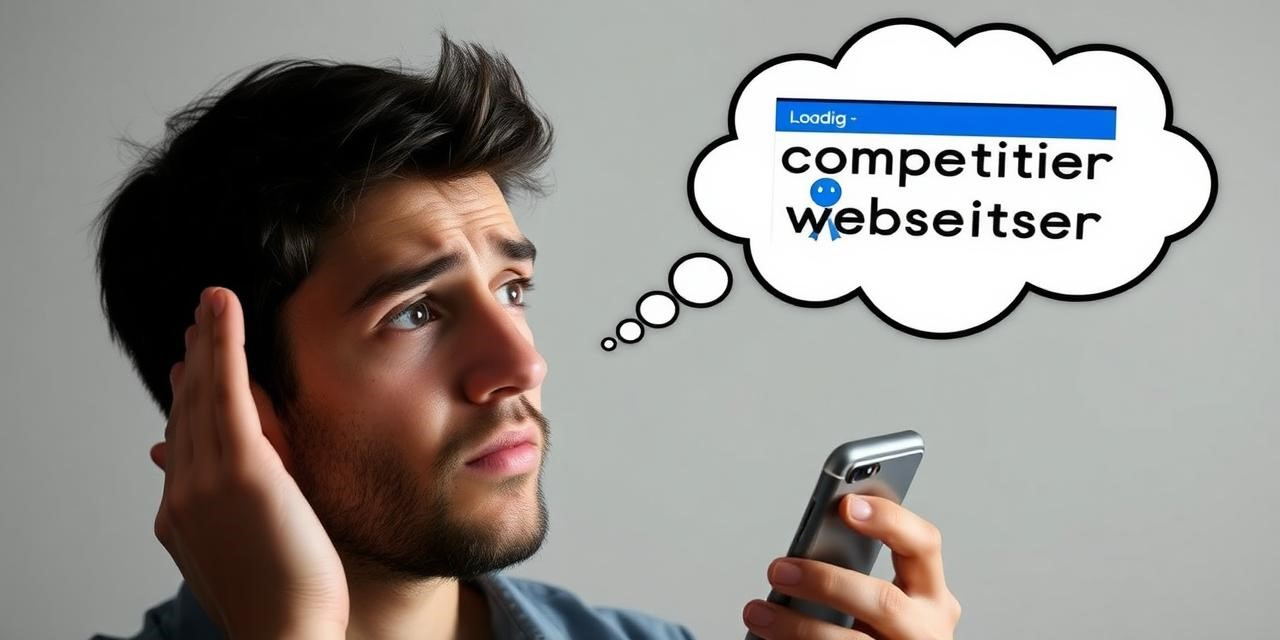Let’s be real. In today’s digital world, nobody has time to wait for a slow website. If your site takes too long to load, people will leave – and Google will notice. I’m Ethan Miller, and I’ve spent years building websites, running marketing campaigns, and advising businesses. One thing I’ve learned? Speed matters. This article will show you why website speed is critical for both user experience and SEO. Plus, I’ll give you some actionable tips to make your site fly.
Website Speed: It’s More Than Just Load Time
When we talk about “website speed,” we’re not just talking about how quickly a page seems to load. It’s about several factors working together. Think of it like a race – there are multiple checkpoints along the way.
- Load Time: The whole shebang. How long does it take for everything to load?
- First Contentful Paint (FCP): When does the very first piece of content (text, image, etc.) pop up on the screen?
- Largest Contentful Paint (LCP): How long until the biggest element (image, video, or block of text) is visible? This is a big one.
- Time to Interactive (TTI): When can users actually start clicking and interacting with the page? No one likes a dead page.
Google cares about these metrics a lot. Especially LCP, FCP, and TTI. They’re all part of Core Web Vitals, which Google uses to judge your site’s overall user experience. And a good user experience equals better rankings.
Why Slow Sites Drive Visitors Away
Imagine walking into a store and waiting… and waiting… just to see if they have what you need. You’d leave, right? Same deal with websites. A slow site makes a terrible first impression. The result?
- Sky-High Bounce Rates: People are impatient. Google says if your site takes three seconds to load, the bounce rate jumps 32%. Five seconds? 90%! Ouch.
- Low Engagement: Slow sites mean less time spent on your site, fewer pages viewed, and less interaction with your content. It’s like watching a movie on dial-up – nobody’s got the time.
- Tanking Conversion Rates: If your site is slow, people are less likely to buy, sign up, or do anything you want them to do. Akamai found that a measly 100-millisecond delay can kill conversion rates by 7%.
- Trashed Brand Reputation: A slow site makes you look unprofessional. People might think you don’t care about quality or attention to detail. Not the message you want to send.

Think about it: a fast website says, “We value your time.” A slow one? It screams, “We’re stuck in 1999.”
SEO and Speed: A Match Made in Heaven (or Hell?)
Google has been banging the drum about website speed for years. And it’s only getting louder. Here’s how speed impacts your SEO:
- Ranking Boost: Google uses page speed as a ranking signal, especially on mobile. Faster sites tend to rank higher. Simple as that.
- Better Crawlability: Search engine bots have a limited “crawl budget.” If your site is slow, they can’t crawl as many pages, which hurts your indexation and visibility.
- Mobile-First Indexing: Google uses the mobile version of your site for indexing and ranking. So, if your mobile site is slow, you’re in trouble.
- Core Web Vitals: Remember those? Optimizing your website speed is essential for improving your Core Web Vitals scores. Do it for the SEO!
Bottom line? If you want to rank well, you must prioritize website speed. No excuses.
Real-World Speed Fails (and Wins!)
This isn’t just theory. Plenty of companies have learned the hard way that speed matters.
- Amazon: They figured out that every 100-millisecond increase in load time cost them 1% in sales. That’s millions of dollars.
- Walmart: They saw a 2% jump in conversion rates for every single second they shaved off their load time.
- Google: Even Google stresses the importance of speed for user satisfaction and search rankings. They practice what they preach.
These examples prove that website speed directly impacts your bottom line. Investing in optimization is an investment in your business.
How to Turbocharge Your Website: Actionable Strategies
Okay, enough doom and gloom. Let’s get practical. Here are some concrete steps you can take to make your website faster:
- Image Optimization: The Low-Hanging Fruit
Big, unoptimized images are a huge drag on website speed.
- Compress: Use tools like TinyPNG or ImageOptim to shrink those files without losing too much quality.
- Format: JPEGs are great for photos, PNGs for graphics with transparency. Consider WebP – it’s a newer format that offers better compression.
- Responsive Images: Serve different image sizes depending on the device. No need to send a huge image to a tiny phone screen.
- Browser Caching: Give Browsers a Memory
Browser caching lets browsers store static assets (images, CSS, JavaScript) locally. This way, they don’t have to download them every time a user visits your site.
- Cache Headers: Configure your server to set the right cache headers for those static assets.
- Content Delivery Network (CDN): CDNs store your content on servers around the world. Users download content from the server closest to them, which is way faster.
- Minify Code: Trim the Fat
Minification removes unnecessary characters (whitespace, comments) from your code, making the files smaller.
- Minification Tools: Use tools like UglifyJS or CSSNano to minify your code.
- Combine Files: Reduce HTTP requests by combining multiple CSS and JavaScript files into fewer files.
- Web Hosting: Choose Wisely
Your web hosting provider is a major factor in your website’s speed.
- Consider a CDN: Seriously, CDNs are worth it.
- Upgrade: If you’re on a shared hosting plan, think about upgrading to a VPS or dedicated server for better performance.
- Database Optimization: Keep It Clean
A messy database can slow things down.
- Clean Up: Get rid of old revisions and spam comments.
- Optimize Tables: Optimize your database tables to improve query performance.
- Reduce HTTP Requests: Less is More
Every element on your page (images, CSS files, JavaScript files) requires an HTTP request. Reducing the number of requests can significantly improve page load time.
- Enable Compression: Squeeze Those Files
Use Gzip or Brotli compression to reduce the size of your website’s files. Most web servers support these methods.
- Monitor: Keep an Eye on Things
Regularly monitor your website speed using tools like Google PageSpeed Insights, GTmetrix, or WebPageTest. This will help you find areas for improvement and track your progress.
In Conclusion: Speed is the Name of the Game
Website speed isn’t a “nice-to-have” anymore. It’s essential. It impacts user experience, SEO, and your bottom line. By prioritizing speed optimization, you’ll create a better experience for your users, rank higher in search results, and drive more conversions. So, take action! Implement these strategies and enjoy the rewards of a faster, more efficient website.
Remember: a fast website makes everyone happy – your users, Google, and you!



